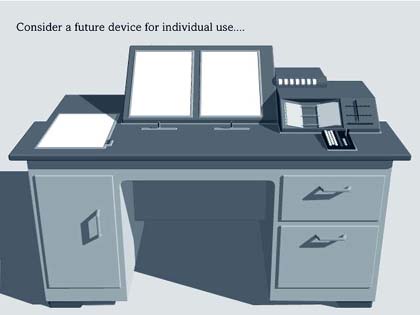 I'm Greg Lloyd, President and co-founder of Traction Software, Inc. You can reach me by email at grl@tractionsoftware.com. As of 2023, I make most of my social media posts on Mastodon as @Roundtrip@federate.social. You can also read Traction Software's group blog for posts by me and other TSI folk. I use this Support TeamPage server to work with the rest of the Traction Software team, TeamPage customers, and TeamPage partners around the world. I'll still respond to email, but I'm happy to be living a post-email life for most of my work, and to keep in touch with distant friends. I'm a co-author of US Patent 7,593,954 for Traction Software's core hypertext technology along with Chris Nuzum, Andy Keller, Roger Fujii, and Jun Simmons. more I'm Greg Lloyd, President and co-founder of Traction Software, Inc. You can reach me by email at grl@tractionsoftware.com. As of 2023, I make most of my social media posts on Mastodon as @Roundtrip@federate.social. You can also read Traction Software's group blog for posts by me and other TSI folk. I use this Support TeamPage server to work with the rest of the Traction Software team, TeamPage customers, and TeamPage partners around the world. I'll still respond to email, but I'm happy to be living a post-email life for most of my work, and to keep in touch with distant friends. I'm a co-author of US Patent 7,593,954 for Traction Software's core hypertext technology along with Chris Nuzum, Andy Keller, Roger Fujii, and Jun Simmons. more | Education | | Brown University, 1974 Sc.M. in Applied Math and Computer Science, working with Andy van Dam's group on experimental compiler design, with a masters thesis on optimizing microcode generation for a high level language targeting a horizontally encoded control store of a digital signal processor. | | Brown University, 1970 Sc.B. in Physics and Computer Science, to the best of my knowledge, this was the first independent concentration Sc.B. granted by Brown. I completed the core Physics requirements but took most of my electives in Computer Science starting with Andy van Dam's then infamously intensive Applied Math 101, 102, 103, 104 Introduction to Computer Science —a two semester, quadruple credit sequence with a workload closer to a medical residency than a university course. That led me to a sequence of graduate level Computer Graphics, Programming Language, and theoretical CS courses that left little time for Physics. My earliest exposure to hypertext was as one of the first users of the 1968 Hypertext Editing System developed by Andy van Dam, his Swarthmore classmate Ted Nelson, and a crew of Brown students. | Background | | After getting hooked on hypertext I was drafted into the U.S. Army in June 1971. While waiting in line to board a Fort Dix bus to start training as an RTO headed for Vietnam, by sheer luck I was plucked from the line to shuffle magnetic tapes and run batch analysis jobs in a U.S. Army data center in Washington, D.C. Through another lucky chance, I spent the last 15 months of my Army career as an enlisted engineering aide to Dick Merwin, the chief computer scientist of the Safeguard missile defense system—a great person, a great engineer, and a great volunteer leader of the IEEE Computer Society. | | Through Dick Merwin, I met YS Wu and his crew at the U.S. Naval Research Lab. I joined NRL as a computer software and systems engineer after leaving the Army and getting my Sc.M. in Computer Science at Brown. At NRL I worked on design, development and support of acoustic digital signal processing systems and Defense Department and NASA consulting tasks. I became an NRL engineering project manager. | | After NRL I helped design and develop simulation and training systems at Ship Analytics, and then joined the founding team of Context Corporation (a Mentor Graphics subsidiary) in 1985. About a third of the early Context team were from Brown CS, including Mentor Graphics co-founder Charlie Sorgie, who at one point led the FRESS hypertext group. At Context I helped develop an Apollo workstation based document editing and publication system called DOC. The Context DOC system carried forward many hypertext features from FRESS. It added a novel form of change control that captured named sets of edits in a change object. DOC allowed any named change to be shown, highlighted, hidden or reopened to revise and extend that change at any time, subject to a permission model that optionally limited who could open a change to capture edits. Individual changes could also be locked to preserve their edit state, or unlocked—another change permission. Think of each named change as an independent Engineering Change Proposal (ECP) expressed as a set of insertions and deletions anywhere in a large document such as an Aircraft Maintenance Manual. You could then show and hide any set of named changes to see and edit a document representing any ECP configuration, and continue editing on top of the document showing that set of ECPs—with your edits captured in any change you had permission to open. I was co-inventor of the Doc change control model. | | I left Mentor Graphics/Context to join the early team of Electronic Book Technology (EBT) in Providence RI to build DynaText—an Industrial-strength SGML based hypertext systems used for electronic maintenance and repair manuals, scholarly collections of documents (for example, a corpus of English language poetry), and computer system and software documentation. EBT DynaText documentation customers included Novell, Silicon Graphics, and Sun Microsystems. | Why Traction Software? | | When INSO corporation acquired EBT in 1996, Chris Nuzum—then a software engineering team leader at EBT—and I decided to found Traction Software. In fact, Traction was the code-name for our internal "getting traction" work. We eventually named the company Traction Software, and its product Traction TeamPage. | | Traction TeamPage uses bi-directional, secure, and reliable links, paragraph level addresses, and tags that are stable across edits. TeamPage enables people to collect, edit, link and deliver content to the Web without losing the benefits of a simple and stable internal environment for secure and scalable working communication. TeamPage presents a standard Web interface to the external world, and allows people to log in to and use TeamPage using a standard Web browser. We call the internal representation TeamPage uses the Journal—in honor of Doug Engelbart. | | Both technical features and the use cases for TeamPage were inspired by the work of Douglas Engelbart—who was on Context's Technical Advisory Board along with Andy van Dam. Starting in 1964, Engelbart envisioned and implemented an integrated hypertext system for wiki-like collaborative editing, combined with blog-like journaling of conversational content | Related | | For more on what I think this means, please see: | Original Traction Product Proposal - dated October 1997
The Evolution of Personal Knowledge Management - grl blog April 6, 2006
Traction Roots - Doug Engelbart - grl blog April 9, 2006
Learn by Watching - then Do - grl blog August 4, 2007
Enterprise 2.0 - Letting Hypertext out of its box - grl blog April 24, 2007
Reinventing the Web - grl blog January 12, 2009
Enterprise 2.0 Schism - grl blog November 9, 2009
A Half Century of Hypertext at Brown (pdf) - Brown CS Event May 23, 2019. YouTube video playlist. | | and of course | | As We May Think - Vannevar Bush, Atlantic Monthly July, 1945 | 
Chris and I wanted to build a modern day Memex that worked like the Web. It’s up to you to decided if we did. |
|
